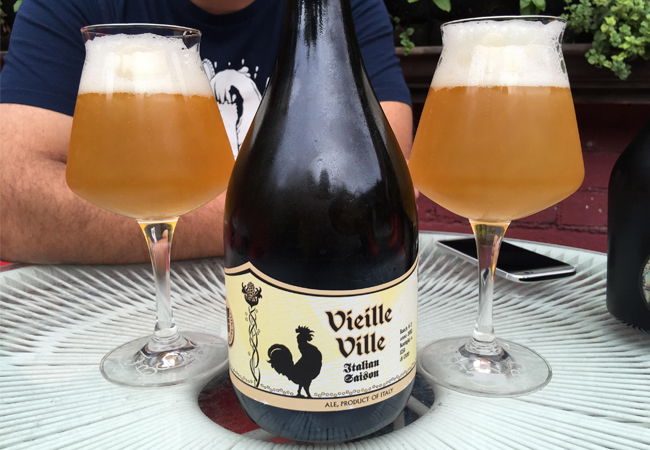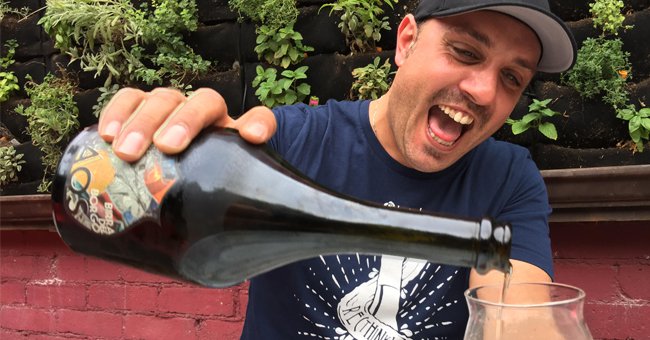Italians have always been craftsmen, but when it came to beer, the only tradition was making pilsner-style beers on a macro-brewer model. What Italy lacks in beer traditions, however, they make up for in newfound passion. Home to the slow food movement (a response to mass-produced fast food) and an international hub for viticulture and the culinary arts, Italians are stepping away from beer mechanized on the industrial scale and applying their culinary ethos to making ales and lagers. They’re now drawing on their heritage and passion to make world class beer. On the forefront of this better beer movement, Birrifcato Del Ducato’s Giovanni Campari says, “Italians have always been known as artisans, but also in the gastronomic sense, and the beer can represents this in a perfect way,” he says. “Beer [is] a mix of knowledge between natural world and culture. And Italian people do it better!”
Drawing on influences from the Americas and from their closer neighbors in Belgium, Germany and England, Italian brewers have bridged the gap between old world and new. Valter Loverier of LoverBeer, a driving force in the Italian craft beer movement, explains: “Always the old world inspires us but, paradoxically, in recent years this influence came from the New World. Even today Europe is awakening and seeking its origins but certainly the bulk of the work was done in the U.S. over the past thirty years.”
And, like in the U.S., it was all born from the home brew movement. Home-brewing wasn’t officially legal in Italy until 1995, but soon after, a small revolution began. Brewpubs and small breweries started opening up from Rome to Milan and beyond. Teo Musso of Baladin brewery is credited with being the first, but around that same time, Birrificio Italiano of Agostino Arioli, Lambrate in Milano, and Turbacci in Mentana (Rome) all emerged as pioneers of the Italian Beer scene.
 Vieille Ville, a saison brewed by Birrificio Del Ducato, is fresh, spicy and a bit tart.
Vieille Ville, a saison brewed by Birrificio Del Ducato, is fresh, spicy and a bit tart.
Sicilian-born Massimo D’arrigo owns Bevi Beverages in Las Vegas, and he distributes all-Italian beer and has a particular love for the craft. “It has an arc like that of the American craft beer scene, but it just started a little later and is smaller,” he says. “Italy has about 1000 breweries now, but about 60 that are really good.”
The movement has spread all over Italy, but there are a few regional capitals that have emerged. Massimo explains that Rome is a leader “in terms of pubs and consumption of craft beer, but in many cities or even villages there are passionate people who have opened a pub and are focused on the quality,” he says. “The regions with the most breweries are Piemonte, Lombardia, and Lazio.”
“One great thing is that all the brewmasters are so close to other areas of Europe to study, and they have great access to cool raw materials,” he says. “They can give great representations of styles and put a creative twist on them but maintain the genre. Right now, German Brewmasters are extremely interested in what’s happening in Italy.”
Italian craft beer has been growing at a pace similar to that of the U.S., but they are still quite small in comparison. From the half-dozen breweries in the mid nineties, there are now close to 1000. Production-wise, Italy now crafts close to 300,000 barrels per year — not even half of the annual barrels produced by the U.S.’s third-largest craft producer New Belgium’s 765,000 barrels per year.
One benefit of small production is the ability to maintain quality. Not just locally, but now internationally, many of Italy’s top breweries are receiving international acclaim with such accolades including Baladin, Birra del Borgo and Birrificio del Ducato.
Even in the new world, where Italy derived much of its craft influence, we are finding a growing interest in the craft scene. Some of America’s best brewers have sought out collaborations with their “fratello Italiano” including Garret Oliver of Brooklyn Brewery who collaborates with Amacarod Brewery from Rimini, and Dogfish Head is in collaboration with Birra del Borgo. The Birra Del Borgo brewmaster, Leonardo Di Vincenzo, spoke about the latter:
“It was a great day for me,” he says. “The result? An intriguing beer, extremely perfumed, where floral and resiny notes mix together. The mouthfeel is explosive but balanced at the same time. The honey notes from the malts and the peppery ones from the hops mix in a very elegant and precise finish. I can’t stop drinking it, it’s my new favorite.”
Some wonder if this trend will last in a country synonymous with vino, but those with the craft fervor don’t appear worried. Campari thinks that it is a convergence of their entire history. “I view our tradition like a melting pot; everyone with their own ideas and brewing culture. Do you remember ‘The Factory’ of Andy Warhol? We are artists, so let us create.”
Beer in Italy has become more than just a mass-produced, lightly flavored palate cleanser. Focusing on quality, innovation and most of all passion, the new kids on the block are bringing together a longstanding history of culinary expertise to the art of making brews. Their harmonious approach strives for the complexity and balance in what they produce, and offers a convergence of old world and new.




